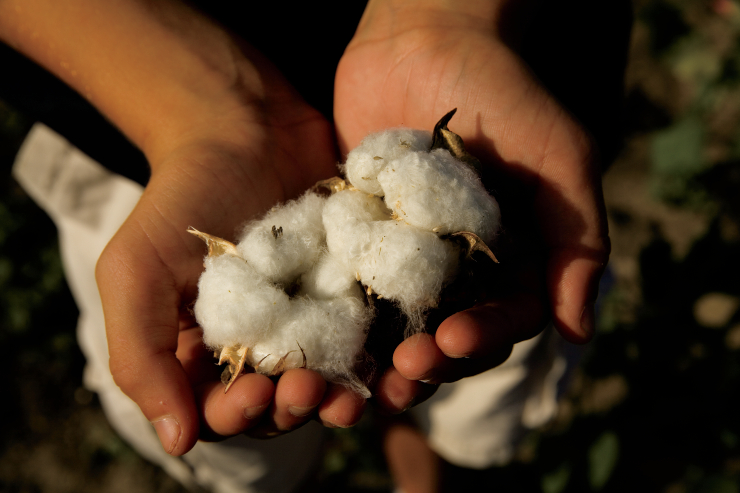Home > Texas > Texas Crops & Livestock > Kings of Cotton
Kings of Cotton
In partnership with: Texas Department of Agriculture

As one of the largest cotton production areas in the world, the High Plains region grows up to 30 percent of the U.S. cotton crop, in excess of 4 million bales each year, contributing more than $3 billion to the local economy.
Shawn Wade, director of policy analysis and research for Plains Cotton Growers Inc., lists several geographical advantages that contribute to the region’s successful cotton yields.
“We don’t have high insect pressure, and we have a growing season that’s conducive to cotton,” Wade says. “The temperature — being at the elevation we are — is mid-range. It doesn’t get too hot during the day, and it doesn’t stay hot during the evenings.”
Although weather has had a significant impact on cotton production over the past few years, Wade says the region has been able to provide supplemental irrigation to augment rainfall, allowing farmers to produce a steady yield even during these dry years. Wade says High Plains cotton producers have invested in new technology, new equipment and more efficient processes to offset the challenges of weather and rising fuel costs.
Research Strengthens Crop
Wade points to the development of new seed hybrids as also helping improve yield and quality. He says producers are particularly fortunate to have major research institutions in their backyard, as well as the benefit of research and development arms of agribusiness corporations like Bayer CropScience, Monsanto and Dow Chemical Company.
“Texas Tech University and Texas A&M University have been an important resource for producers when they’re looking for advice and ideas of how to do things better,” Wade says. “Those guys get called on every single day. It’s nice to have so much expertise at our fingertips. It’s a one-stop shop for cotton production. We have an answer to just about any question a producer might have.”
Dee Vaughan, who operates a 7,000-acre cotton and grain farm in Dumas, agrees. He says technological advances such as plant breeding, along with water availability, has made it easier to produce a high-quality yield that thrives in the shorter growing season. Vaughan sees the future success of High Plains cotton production as dependent on developing more drought-resistant seed.
“Even though we have good irrigation now, it’s declining. So in the future, we’re going to need acres that rely on less water,” Vaughan says. “It will be a boon to this area when those varieties of cotton and corn hybrids come out that are drought-resistant.”
Wade says the future looks bright for High Plains cotton producers — especially in the long term.
“We’ve got the tools to produce a high-quality crop that is in high demand all over the world for many years to come,” Wade says. “We have many natural advantages and resources that make the region conducive to growing high-quality cotton with longer and stronger fibers.”





Hi. We would love to visit a cotton farm near to Houston Tx for taking pictures of our kids,
Can you please share some information about address and time to visit and if we should pay for it
Thanks
59 South toward Wharton and Victoria are the closest cotton fields I’ve seen. More down 77 towards Corpus Christi
This is Mustafa, reaching out from TGL Supplies.
We’re currently engaged in a Raw cotton project for our long-term project.
As it’s a long-term project we will need 20-30 containers per month, but to start up we will begin with a small amount with you guys.
Can you confirm your willingness to help improve the project?